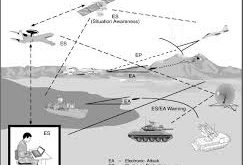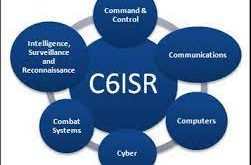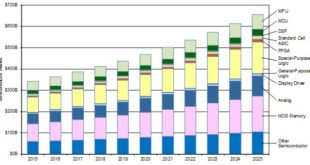Due to the growing, insatiable thirst for information, both commercial and defense communications are driving towards increasingly higher data rates and wider bandwidths of operation. This in turn is driving systems toward higher operating frequencies, which more easily supports larger channel bandwidths. For example, today’s cellular networks (i.e., cellular networks …
Read More »Distributed Coherent RF Arrays of radar, communications and Electronic warfare enable Network-Centric (NCW)
Researchers are exploring the possibilities of combining the operations of distributed mobile systems with coherence at the radio frequency (RF) level, called coherent RF arrays, and the microwave and millimeter-wave technologies necessary to get there. The term “distributed” makes explicit that either the transmission or the reception function is divided …
Read More »Terahertz Antennas
Terahertz (THz) represents the portion of the electromagnetic radiation between the microwave and the infrared region. It is within the frequency range of 0.1–10 THz, corresponding to wavelengths of radiation from 3000 to 30 µm. The advantages of the terahertz light are that they are non-invasive, intrinsically safe, and non-ionizing, …
Read More »Reduction of Magnetic Field Signature of Military Vehicles and Ships
As a vessel travels under or on the surface of water, it causes a detectable local disturbance in Earth’s magnetic field. This disturbance, referred to as the magnetic signature, makes the vessel vulnerable to enemy defense systems. In submarine warfare, adversaries use increasingly sophisticated magnetic sensor and signal processing equipment to …
Read More »Next-gen spaceflight computing Radiation hardened Processors
The advances in space demand next generation of space data and signal processing requirements High speed computers enable on-board image processing capability reduce the amount of bandwidth required to downlink the enormous images associated with emerging sensor developments. Onboard processing allows a complete image to be down linked directly to …
Read More »Quantum Thermal Transistor
The control of electric currents in solids is at the origin of modern electronics which has revolutionised our daily life. The diode and the transistor introduced by Braun and Bardeen and Brattain are undoubtedly the corner stones of modern information technologies. Such devices allow for rectifying, switching, modulating, and even …
Read More »Electronic connectors becoming high-speed, compact and thinner, high frequency and high power connectors.
An electronic connector is an electro-mechanical device whose purpose is to quickly and easily disconnect or interrupt a circuit path or electrical circuits . Most electrical connectors have a gender – i.e. the male component, called a plug, connects to the female component, or socket. The connection may be removable …
Read More »Digital software-defined radar technology for Military
RADAR offers special advantages with respect to other types of sensors including all-day, all-weather operations, long detection distance and, depending on the frequency used, penetration. Moreover, radar can often be carried by a number of platforms, spanning from classic naval and airborne to more recent space-borne, UAVs, such as drones, …
Read More »Militaries moving from C4ISR and C5ISR to C6ISR
Success in traditional warfighting domains now requires mastering the Information Environment, which includes the electrometric spectrum, space, cyber domain, and the data that crosses them. Rapid data-enhanced decision-making, which increases lethality, defines warfare in the Information Age. Success depends on rapidly understanding the environment and enemy to make decisions faster …
Read More »Large Global semiconductor market growth driven by consumer electronics, cloud computing, internet-connected devices (IoT), and Artificial Intelligence
The semiconductor industry is the aggregate of companies engaged in the design and fabrication of semiconductors and semiconductor devices, such as transistors and integrated circuits. The semiconductor industry is in turn the driving force behind the wider electronics industry. The amazing development of electronics in the past decades, from early …
Read More » International Defense Security & Technology Your trusted Source for News, Research and Analysis
International Defense Security & Technology Your trusted Source for News, Research and Analysis




